Subfamily Chelodininae Higher classification Myuchelys Order Turtle | Genus Myuchelys Phylum Chordata Rank Species | |
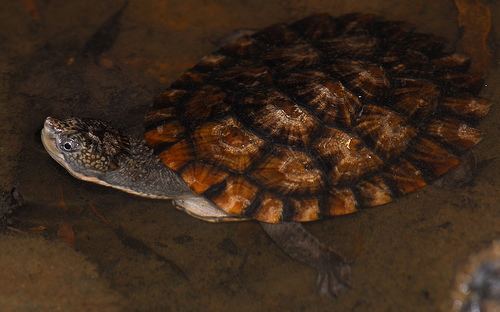 | ||
Similar Turtle, Elseya, Myuchelys, Murray River turtle, Namoi River snapping | ||
Saw shelled turtles time lapse
The saw-shelled turtle, Myuchelys latisternum, is a species of turtle in the Chelidae family endemic to Australia, ranging along rivers and streams and connected swamps and lagoons from coastal Cape York Peninsula to northern New South Wales, with populations also noted as far south as Newcastle - (Williams River Catchment site of the former Tilligra Dam). They are thought to have been introduced to Lake Eacham in the Atherton Tablelands. Other common English names are: serrated snapping turtle or common sawshell turtle.
Contents
- Saw shelled turtles time lapse
- 2 baby saw shelled turtles exploring their new home
- Description
- Nomenclatural history
- Nesting
- Feeding habits
- Behaviour
- References
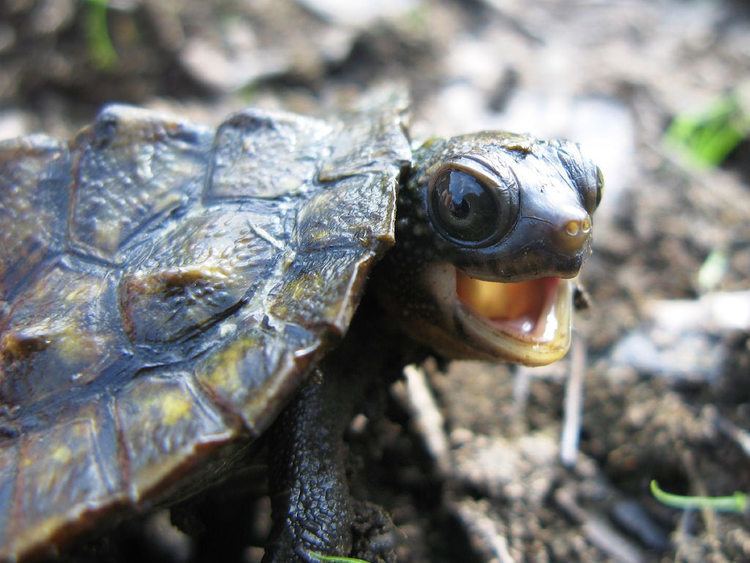
2 baby saw shelled turtles exploring their new home
Description
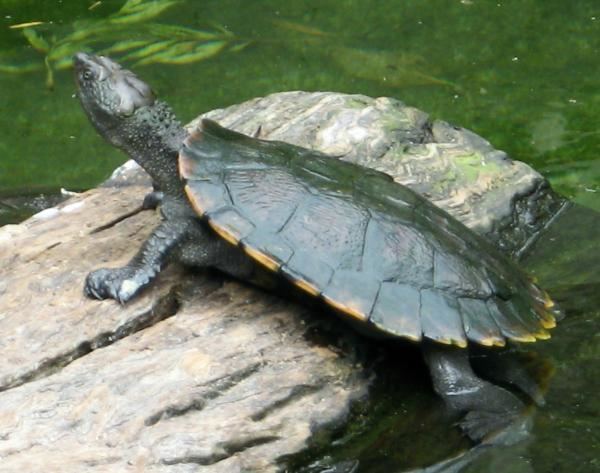
The female is considerably larger than the male, with a carapace up to 28 cm long compared to the males which rarely get longer than about 18 cm. The carapace is roughly oval and broad at the rear. They are not usually aggressive, but can bite fiercely. They can also emit a strong smell.
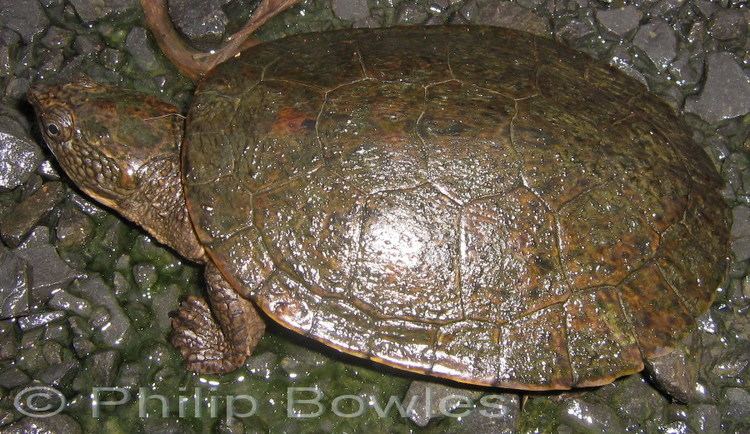
The shell has marginal serrations which are the reason for its common name. It retains some of these serrations throughout its life. "The head shield extends down the side of the head to just above the tympanum, and the top of the neck has prominent pointed tubercules (many of these with an apical sensory pit)."
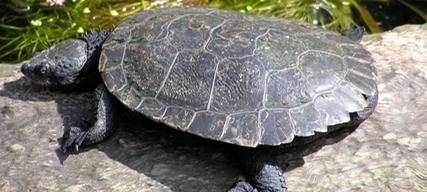
The carapace is mainly brown to dark brown, commonly with some dark blotches. The plastron (underside) is yellowish. The head is large with a projecting snout and a horny plate on the top. The neck can fold sideways. The feet are webbed and also clawed. Hatchlings have serrated hind legs which become smooth as they mature.
Nomenclatural history
Myuchelys latisternum (Gray, 1867) (common sawshell turtle)

follows that of Gray (1872a) and Boulenger (1889).
The combination Wollumbinia latisternum (Gray, 1867) Wells, 2007, was declared unpublished and hence unavailable for use by Georges & Thomson, 2010.
Nesting
The females nest from September to December. They can have three to four clutches in one season of 9 to 36 eggs which hatch before winter in about 60 days, with the incubation period shortened in southern regions. The eggs are variably described as either "hard-shelled (34 X 22 mm)", or as small and "flexible-shelled".
Feeding habits
The saw-shelled turtle is carnivorous and feeds on fish, tadpoles, frogs, and aquatic insects, and is one of the few native Australian animals successful in preying on the introduced and very poisonous cane toad (Bufo marinus). Toads too large to swallow whole are first shredded with their front claws.
Behaviour
Like many other aquatic turtles, the saw-shelled turtle is able to obtain oxygen from water through skin, cloaca, and buccopharyngeal cavity, thus extending its ability to stay under water for prolonged periods.
